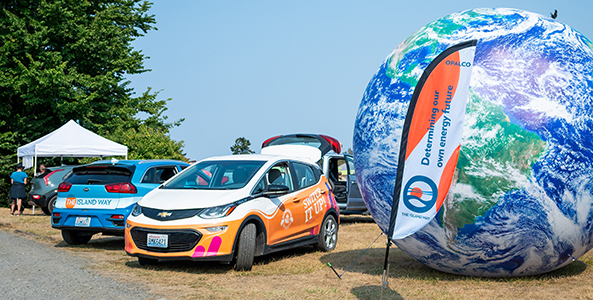||| FROM RICK RHOADS for ORCAS ISLAND FOOD BANK |||
 It’s growing season! Each year dozens of you harvest more than you can consume, and each year thoughtful growers share their harvest with friends and neighbors, including via the Food Bank.
It’s growing season! Each year dozens of you harvest more than you can consume, and each year thoughtful growers share their harvest with friends and neighbors, including via the Food Bank.
To make it easy for growers and to cut down on food waste, here are five steps to smooth the transition from seed to plate.
1) Please call before you harvest
Questions to ask the staff: Can you take my donation now? What day can you accept it? (We prioritize locally grown food, but due to space constraints and current inventory, we sometimes have to decline. You’ll find our 2023 produce wish list after step 5.)
2) Bigger is not always better
For example, we do not accept skateboard-size yellow squash or zucchinis, woody carrots, and bolted greens. Those are likely to end up in the pig bin. We suggest contacting your neighborhood livestock farmer. Please harvest at the size you see in the grocery store and farmers market.
3) Harvest in the morning
Harvesting in early morning, when produce has the highest water content, makes for a longer shelf life. Most produce is 85 to 95% water when harvested and loses 5 to 10% of its weight after harvesting. Please assume that it could be as long as seven days before your donation is consumed.
4) Wash and cool right away
For produce that starts to wilt soon after harvest, the best practice is to harvest in the early morning, wash it, and refrigerate it right away. Plan beforehand with our staff as to when you can bring it to our cooler. If your produce prefers to be in water, like herbs and leafy greens, please keep them watered until you deliver them.
Covering some produce in a plastic bag can keep it fresh and hydrated. All produce must be clean and ready to distribute. Our staff and volunteers are running just to keep up with increased demand, so we’re unable to wash or process produce.
5) Trim the excess
If it’s not typically consumed, please leave it in the compost pile. Trim off carrot tops, extra stems, leaves, and roots. This will help us do what we must within our limited space and workforce — move food fast. Ideally, pre bunched and ready to distribute portions are the easiest for us. Please ask us if you need bags, twist
ties, or rubber bands.
Additional vital info
So that we can offer clean and healthy food and maintain our commitment to sustainable food production, we ask that your donations be grown without commercial pesticides/herbicides. And a reminder that San Juan County is proud to be GMO-free!
Here’s our 2023 home-grown produce wish list
Herbs (all)
Fruits (all)
Berries (all)
Snow peas
Corn
Broccoli
Cauliflower
Melons
Green beans (Young pole, wax, or bush beans. Harvest before
the seeds are visibly evident.)
Peppers (all)
Tomatoes
Winter squash
Pumpkins
Some home-grown produce we might not need in 2023. We have contracted with local farms for ample amounts of these items, but you can always ask us if we need more.
Kale (all types)
Shelling peas
Garlic scapes
Thank you from our board, our staff, our volunteers, and, especially, our customers!







